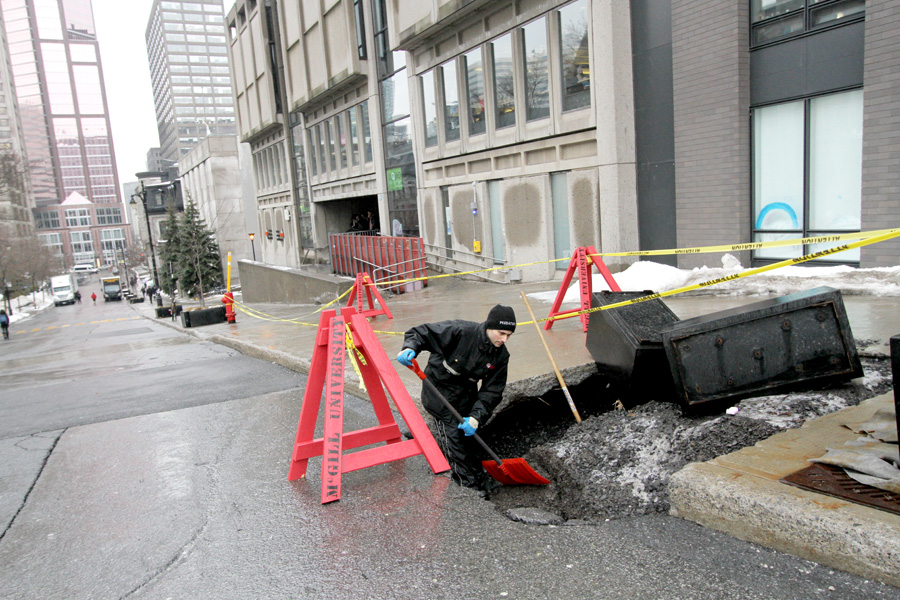The cleanup of McGill’s downtown campus continues this week after severe flooding occurred on Jan. 28. Several buildings remain inaccessible to students and staff, and several hundred people have been relocated until building repairs are completed.
The flood occurred when a 48- inch water main at the McTavish Reservoir broke, releasing 40,000 cubic meters (just over 10.5 million gallons) of water. Last Thursday, the city of Montreal announced that the incident concluded that the burst may have been caused by construction workers shifting earth around the pipe. Financial responsibility for the incident has not yet been assigned.
According to McGill Vice- Principal (Administration and Finance) Michael Di Grappa, the flood caused the cancellation of 80 classes and the relocation of 12 laboratories on Monday. He said approximately 12 buildings were affected, including Service Point, the James Administration Building, and the Wong Building.
While most buildings have been reopened, the Wong Building remains closed, as well as basement spaces in Birks Building, Wilson Hall, and 3534 University—the building that houses the School of Environment. People in these spaces have been relocated to places like the Ferrier Building and the Stewart Biology building while repairs are conducted, which are predicted to take two to three months.
“The damage has been flooding in foundations, there’s a risk of mold, there’s damage to furniture, [and] damage to equipment,” Di Grappa said. “We don’t know what the dollar amount is, but believe it will be hundreds of thousands of dollars.”
Some of the most extensive damage has been to the James Annex— a small building by the James Administration building that houses McGill’s graphic design team– where water smashed a window and flooded the building. According to Director of Internal Communications for the Media Relations Office Doug Sweet, staff members who work in the Annex and the second floor of James Administration will not be able to return to their offices until repairs are complete, which could take several months. This further delays damage assessment.
“We don’t have a precise estimate of the costs, and in fact, some of them haven’t been incurred yet— for example, whatever it will cost us to relocate people from James Annex and from the second floor of the James Admin Building,” Sweet said. “[We] will be filing a claim with our insurers.”
A clean-up effort on campus has been underway for over a week to remove debris, before freezing temperatures complicate the process.

“There’s a very fine silt of mud that is very hard to remove when it freezes,” Angelo Tambasco, supervisor of McGill’s Grounds and Vehicle Services, said. “If all this mud freezes up, we’re going to have to wait for the next window of opportunity to be able to clear it up.”
Tambasco said his crew focused on freeing emergency exits, since a building must remain closed if its emergency exit is blocked. Tambasco also said that the flood may have caused more serious problems in places like McTavish Street, where entire areas were washed away by water, and cracks in the road have appeared.
“Right now, a lot of the earth underneath is still frozen, so you could have some voids underneath your roadways,” he said. “A lot of this is going to have to be looked at come spring, [because] at this particular point in time, we can’t really tell [if it’s dangerous].”
A student-run garden located behind McGill’s School of Environment on University Street was also severely damaged when floodwater washed soil away, dumped bricks and rocks in the area, and may have carried pieces of a nearby invasive plant into the garden. The garden is run by Campus Crops, a student-run collective that promotes urban agriculture.
“A lot of time, energy, and money has been lost for us, especially since the little good quality topsoil we managed to have accumulated so far seems to have been washed away,” Campus Crops Coordinator Carl Dion Laplante said. “We’ll have no choice but to remove as many rocks as possible and see what we can do with the soil that is left.… We might not be able to use it to grow vegetables next summer.”







